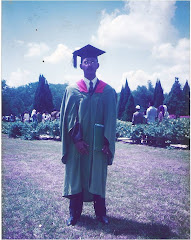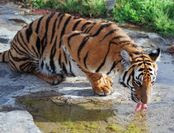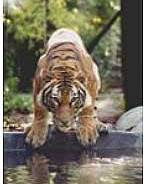Abstract:
The leadership theories presented in this research are representative of four different eras. The Trait era which began in the early 19th century correspond to the early period as delineated by Wren (2005), the theory of Bureaucracy advanced by Max Weber (1864-1920) and representative of the scientific management era, the theory of Mary Parker Follett (1886-1933), which arises out of what Wren (2005) referred to as “the social person era” and the theory of Renesis Likert (1903-1981) which underscores the modern era. These four perspectives provide the basis for a comprehensive review of leadership theories within the context of their similarities and differences and a concluding discussion on how they might address contemporary leadership issues and challenges. This paper is not an attempt to discuss the four theories from a historical perspective; rather it purposes to give some thoughts for reflection on how theories of leadership influence practices in today’s organizations.
Working Paper Series Mark Esposito
Dexter Philips
The Similarities and Differences between four
Leadership Models and How They Might
Address Contemporary Leadership Issues and
Challenges
Supervised by: Dr. Mark Esposito
Abstract
The leadership theories presented in this research are representative of four
different eras. The Trait era which began in the early 19th century correspond to
the early period as delineated by Wren (2005), the theory of Bureaucracy
advanced by Max Weber (1864-1920) and representative of the scientific
management era, the theory of Mary Parker Follett (1886-1933), which arises out
of what Wren (2005) referred to as “the social person era” and the theory of
Renesis Likert (1903-1981) which underscores the modern era. These four
perspectives provide the basis for a comprehensive review of leadership theories
within the context of their similarities and differences and a concluding
discussion on how they might address contemporary leadership issues and
challenges.
This paper is not an attempt to discuss the four theories from a historical
perspective; rather it purposes to give some thoughts for reflection on how
theories of leadership influence practices in today’s organizations.
About the authors
Dexter R. Phillips is a native of Georgetown, Guyana South
America/Caribbean. He has been involved the education for the last 17 years, 10
of which relates to his International Teaching Career in International Colleges
and Schools in the Caribbean, United Kingdom, Philippines and currently
Suzhou Singapore International School China.
At the functional level Dexter’s career spans across a number of administrative
and teaching positions, some of which include, Vice Principal, Dean of students’
affairs, College Careers Counselor, International Baccalaureate Diploma
Coordinator, Head of Humanities and teacher of Business Management and
Economics. He is also an examiner and Internal Assessment Moderator for
Business and Management with the International Baccalaureate Organization
(IBO), Associate Professor of Business Studies at Nations University - School of
the Nations in Georgetown Guyana and has recently published a Business and
Management text book – Higher and Standard Levels Business and Management
Revision Notes for use with the International Baccalaureate Diploma
Programme.
Academically, Dexter holds an International Graduate Teaching Diploma from
the University of Cambridge, a Master of Business Administration from the
University of San Carlos, Cebu Philippines and an Educational Doctorate (Ed.D)
– Major in Institutional Planning from the University of Cebu.
Dexter is currently a doctoral candidate of Business Administration at the Swiss
Management Centre –University (SMC-U).
Mark Esposito, Ph.D. (who has supervised the paper) is an Associate
Professor of Management and Behavior at Grenoble Ecole de Management and a
Research Fellow at the Swiss Management Center.
Introduction
As long as there have been human endeavors, people have always been willing to
take charge of planning, organizing and controlling work (Friesen, and Johnson
1995). One might say that nature abhors a vacuum and someone will always step
forward to fill a leadership void, hence, a natural emergence of leadership. Miller
(1989) subscribes to Johnson’s thoughts by arguing that such natural emergence grew
out of the human instinct for survival in an era where, meeting food, shelter, and
safety needs of communities required cooperative efforts and such efforts had to be
coordinated by some one with the capacity to direct human endeavors in productive
and other activities required for sustaining and building the community.
It is this basic principle which underscores the emergence of leadership and
establishes the concept as a phenomenon rooted in ancient economic, political and
social systems. As humans develop from simple ways of living into more advanced
nations, complex forms of leadership supported by academic models and theories
evolved.
Today these models and theories which underpin the philosophical ideals of the
subject have had far reaching implications in shaping a more complex understanding
of leadership as a discipline and have given many insights into questions such as,
what character traits define a leader and what constitute excellent leadership
practices?
All activities of organizations public or private, religious or the family are impacted
either directly or indirectly by the established principles associated with leadership.
Organizational goals and objectives are accomplished through someone taking the
lead and responsibility for influencing and directing people and activities and
irrespective of whether such leadership is prudent or otherwise it does have
significant implications and continues to be cornerstone of man’s development or
down fall.
The trait era
Borgatta, Bales, and Couch (2001), believed that the great man theory is probably the
oldest theoretical perspective to have received attention throughout the evolution of
leadership thinking. In an era when scholars were seeking some measure by which
leadership could be defined there was the widely acceptable belief that “leaders were
different from their followers and that since fate or providence was a major
determinant of the course of history, the contention that leaders were born, not made
was widely accepted by scholars and those attempting to influence the behaviour of
others” (Cawthon, 1996, p.3). Further developments on the nature of leadership
along this line of argument led to the advancement of trait theory of leadership as we
know it today.
The basic tenet of the trait theory is that leaders can be defined by certain
characteristics or traits and these are what separate them from the group or society to
which they belong (Navahandi, 2006). Consequently, the trait theory dictates that
leaders by virtue of their birth were endowed with special qualities that allow them
to lead others. The major assumption being, that “if certain traits or characteristics
can be used to distinguish between leaders and followers then existing political,
industrial, and religious leaders should possess them” (Navahandi,2006).
During the early period, proponents of the trait theory outlined five characteristics
which today are still considered the corner stones of all leadership theories: (1)
power, (2) intelligence, (3) persuasion, (4) personality and (5) charisma. As other
theories on how to lead and manage successful organizations became prominent,
scholars then found that although trait plays a role in determining leadership ability
and effectiveness, such role was minimal (Wren, 2005).
The new argument which gained much prominence in early and late 19th century
thinking on the subject was based on the notion that leadership should be viewed as
a group phenomenon which cannot be studied outside a given situation (Navahandi,
2006, p.38) and, thus, the bureaucratic theory which advocates the proper order of
doing things became the defining standard for leadership.
The bureaucratic versus the trait theory of leadership
While it cannot be said with certainty that there are considerable similarities between
the trait and Bureaucratic theories of leadership, a certain argument could hold true,
which is, if bureaucracy is defined by executive responsibilities that stress the
importance of the systemic development and application of rules (Clawson, 2002),
then there may be some justification for accepting the notion that some similarities
between these theories do exist. Further, since the trait theory is based on the notion
that power, intelligence, persuasion, personality and charisma are defining
parameters for leadership capabilities; the assumption is that similarities between the
theories do exist.
A careful consideration of the theory of bureaucracy proves the need to vest
authority and power in people. Wren (2005) contends that “some form of authority is
the cornerstone of any organization. Without it, no organization can be guided
towards an objective; authority brings order to chaos” (p.228). Such authority and
power, according to the bureaucratic theory of leadership, should be vested in people
“by virtue of their abilities and skills” (Clawson, 2000). Thus, from a bureaucratic
perspective, the notion is that power and responsibility is entrusted to the ‘common
man’ who exudes such qualities as outlined by the trait theory. Yet irrespective of the
similarities which can be found between the trait theory and some of the underlying
principles of bureaucracy, there exist a number of differences.
Beyond the concept of the ability to lead based on character traits, the bureaucratic
theory advances division of labour. Formal rules and regulations are considered as
the basis for enduring uniformity and discipline. The arranging of office positions in
a hierarchical order, the formal documentation of office authority with strict
adherence of its incumbent to such rules of authority, and the practice of hiring
managers from within differentiates the bureaucratic model of leadership from the
thought that traits are enough to ensure enduring leadership of organizations
(Clawson, 2000;Scott, 2005).
The theory of Mary Parker Follett (1868-1933) versus the trait and bureaucratic
theories
The thoughts of Mary Parker Follett (1868-1933) have significant implications for
leadership. According to Wren (2005), Follett’s theory spans five critical areas of the
leadership and management spheres; the group, conflict, business organization,
authority and power and task leadership.
With regard to the group, Follett believed that the essence of group principle is to
bring out individual differences and integrate them into unity” (Wren, 2005. p.303).
A close examination of this argument substantiates Follett’s conviction that people
are all not the same; they exude different characteristics, which is the basic tenet of
the trait theory. However, Follett did not stop with such mere recognition; she went
on to advocate that in the interest of unity of the whole group such characteristics
and individual interest must be set aside (Bartol and Martin, 1998).
Additionally, inherent in Follett’s theory is the recognition of a bureaucratic structure
of organization and society. The fact that she recognizes the existence of power and
authority gives credence to such assumption. For it cannot be argued, that by the
very nature of her theories on authority and power, such recognition of bureaucracy
is absent or nonexistent in her discourse. Wren (2005), best illustrate this line of
argument by stating that “in this second era, Follett sought to develop “power-with,
instead of power-over , and co-action to replace consent and coercion” (p.308). It
seems, therefore, that Follett’s theory of, “power-with instead of power-over” (Wren,
2005.p.308), sought to bring a new meaning to relationships which exists within
bureaucratic structures.
Another, similarity between Follett’s theory and the bureaucratic theory of
leadership can be cited from her reasoning that authority should be vested in people
with experience and the necessity to achieve goals through coordination and control
(Wren, 2005). She also cautioned that the most ingenious corporate structure means
nothing unless someone leads it well (Harrington, 1999). Similarly, bureaucracy
dictates the need for people in authority to occupy and office and the notion that
appointment to offices should be based on a personal expertise (Navahandi, 2006.
p.38).
In essence, the bureaucratic theory asserts the need for structured organizations with
strict defining rules and regulations while the trait theory is based on leadership of a
single individual or individuals exerting control over subordinates by virtue of
certain traits and characteristics. To bridge overarching principles underscoring these
theories Follett advocates integration.
On the other hand, the underpinning difference between the trait, bureaucratic and
Follett’s principles on leadership can be best explained by what she posit in her
discourse on the topic, what is absent from the trait and bureaucratic theories. Such
notions as, conflict should be resolved through integration of interests and obedience
to the law of the situation, power sharing, establishing good organization by creating
a feeling of working with rather than against someone, recognition that authority
resides not in the person or position but in the situation, and the “development of a
social consciousness, instead of individualism” (Wren, 2005; Scott, 2005; Bartol and
Martin, 1998) sets these three theories apart , yet offers much similarities.
Renesis Likert (1903-1981)
Renesis Likert (1903-1981), proposed a system of leadership and management which
focuses on the entire organization. His main argument was “of all the tasks of
management, leading the human endeavor are the central and most important one
because all else depended on how it is done” (Wren, 2005, p.442). Based on this
belief, Likert proposed a system of leadership which takes into consideration the
whole organization. His proposal pertains to aspects of the organization such as its
structure; methods, form and flow of communication, issues relating to motivation,
procedure for decision making, evaluation of employees and how members of the
organization relate to each other (Pugh and Hinings, 1981). The underlying premise
of Likert’s theory is that four systems of leadership pervade an organization and each
system is associated with certain leadership behaviour.
The first system is regarded as the exploitative authoritative system, the second
being the benevolent authoritative system, the third he describes as the consultative
system and the fourth as participative group’ system (Wren 2005).
The exploitative authoritative system is characterized by the use of coercion to
accomplish organizational goals; one way flow of communication from the top down
where decisions are imposed on subordinates, greater responsibilities for higher level
managers, limited scope for team work and a distant relationship between
supervisors and subordinates.
Under system benevolent, there are rewards for accomplishment of goals but
decision making is centralized. The system facilitates feedback of subordinates to
management, however, suggestions and recommendations are restricted to what
management considers as pertinent to the organization and their personal positions
as leaders. Also, while there is some amount of delegation at the lower levels,
leaders, expect their subordinates to be subservient.
In a consultative system, while major decisions are made at the top of the
organizational hierarchy there is a wider consultative approach which involves all
the internal stakeholders to be affected by the decision. Communication flows both
ways, that is, upwards and downwards but upward critical communication is
cautious (Pugh and Hinings, 1981).
The participative group system is defined by three basic concepts: “(1) the principle
of supportive relationship; (2) the use of group decision making and group methods
of supervision; and (3) setting high performance goals for the organization” (Wren,
2005, p.442).
Additionally, Wren (2005) found that Likert proposed a 5th system in which “an
organization’s hierarchy of authority would be replaced with a reciprocal system of
participation and influence and when there are conflicting situations, groups will
work together through overlapping memberships (‘link pins’) until a consensus
could be reached” (p.443). Such authority, Wren (2005) contends, “Would depend on
the interpersonal skills of creative leaders who had the ability to get others
committed and working towards organizational goals” (p.443).
Overall, the underlying principle of Likert’s theory is that leaders could adopt
behaviours to take account of the situation at hand (Pugh and Hinings, 1981).
The very nature of Likert’s outline of the “four types of leader behaviour” (Wren,
2005) attest to the similarity between his theory and the trait theory of leadership.
The similarity is found where leaders possess certain trait which causes them to
behave in a certain manner. Such behaviour determines a person’s style of leadership
and the extent to which that behavior is executed will have a positive or negative
effect on the organization’s performance as a whole. On the other hand, where there
are differences between Likert’s theory and the trait theory of leadership such
differences exists by virtue of fact that Likert’s theory goes beyond the mere
recognition of traits as the guiding principle for leadership.
Inherent in Likert’s theory on leadership behaviour is the notion that organization
do operate as bureaucracies. The very fact that he gives credence to hierarchical
structure of management where communication is either top down or bottom up or
both ways, and decisions resting with final authority, are aspects of bureaucratic
premise which can be construed as integrated into his arguments of leadership based
on behaviour. For example, Likert advocated vesting authority in creative leaders
with the interpersonal skills and ability to achieve organizational goals by ensuring
employees are committed to these goals and where such goals are achieved due
rewards must be given (Wren, 2005).
Where, leadership based by behaviour differs from bureaucratic leadership,
however, is found in Likert’s principle of supportive leadership. “The principle of
supportive leadership means that a leader must ensure each member of the
organization view the experience as supportive and that one builds and maintains a
sense of personal worth and importance”(Wren,2005).
There are also a number of similarities between Likert’s theory on leadership and
those delineated by Mary Parker Follett. One such similarity is found within the
principles of participative leadership. Like, Follett, Likert advocated unity within the
organization. He argued that the actions of the individual and outcomes must be in
congruence with the organization. In other words, the organization and the
individual must one and in this regard, the development and recognition of a system
where the actions of the organization is a direct outcome of the actions of the
individual, and the action of the individual is a direct outcome of the action of the
organization. (Pugh & Hinings, 1981). To this end, Likert’s systems 4 and 5 mirror
many of the thoughts presented by Follett (Wren, 2005).
Scholars, however, argue that even thought there are obvious similarities between
the theories of Likert and Follett, Likert’s would be viewed as more established in
that the principles he advocated were actually tested within various organizational
setting. Follett’s ideas, one the other hand, are regarded as mere theoretical
underpinnings of what should constitute good leadership practice (Friesen&
Johnson, 1995).
Theories of leadership and how they might address contemporary issues and
challenges
The question of how trait theory might address contemporary leadership issues and
challenges are best described by Navanhandi (2006). “There should be a modern
approach to understanding the role of traits in leadership. Several key traits are not
enough to make a leader but they are pre-conditions for effective leadership” (p.43).
Cawthon (1996) argues that the trait theory of leadership is alive and well. It began
with an emphasis on identifying the qualities of great people; next it shifted to
include the impact of situations on leadership and most currently, it has shifted back
to re-emphasize the critical role of traits in effective leadership (Northhouse, 2004).
Further, the recent rise in popularity of transformational leadership dictates that
leaders do need such traits as delineated by Navanhandi (2006) in order to augment
their capacity to lead today’s organizations. Given this premise, those responsible for
leading and managing organizations are now engaging transformational techniques.
The effectiveness of such engagement, however, is dependent on how far there is the
general belief that traits are valuable components which should be considered in the
organization process (Rost, 1991).
The basic assumption of the bureaucratic theory of leadership is that the boss knows
best and with every thing else this model of leadership is fraught with numerous
short comings. For example, the fitting of people into predefined jobs descriptions
tended to alienate them from their work, encouraged a one-way-top down
communication pattern, and discouraged learning activities (Clawson, 2000). This
means that the problem of bureaucratic leadership looms large for many
organizations, “especially North American and European firms as they wrestle with
the underlying principles, technological breakthroughs, and ferocious competition in
a new emerging paradigm” (, p.21). Such a situation begs the question of how might
the bureaucratic model address contemporary leadership issues and challenges.
Much of the theoretical perspectives which are inherent in the bureaucratic theory of
leadership still have implications for leadership and management as we know it
today. Breaking down jobs into well defined tasks, selecting managers on the basis of
their qualifications and experience, enacting formal rules and procedures to ensure
uniformity and discipline along with applying rules and control uniformly and
impersonally are all aspects of the theory which when applied effectively can have
lasting impact on organizational development and prosperity. For, example, formal
rules and procedures set the tone for conflict resolution, while systems of control
ensure operational efficiency (Scott, 2005).
During the early Social Person Era, at a time when managers believed that workers
should be seen and not heard, Follett’s theory of employees as valuable assets with
the ability to add greatly to their work if their ideas and complaints were listened to,
were not welcomed (Coye and James (2005). However, in today’s organizations
Follett’s thoughts have implications for a number of issues arising from the
leadership and management process. For example, on the issue of coordination,
many organizations promote communication across the status quo. The process is
now both horizontal and vertical as leaders and managers recognize the inherent
benefits of direct contact with their subordinates, regardless of the position they hold
within the organization.
Also the importance of human interrelationship as a driving force of organizational
change and longevity has gained much recognition. More specifically, Follett’s ideas
on integration herald modern methods of conflict resolution (Bartol and Martin,
1998) and it generally believed that for contemporary organizations, Follett’s theories
on leadership can have even greater impact on such issues as communication,
conflict resolution and management and worker negotiations if they are adequately
considered and put into practice. In the long run, organizations can learn from
Follett’s preference for constructive conflict to compromise and her belief that
employees should have a voice in how things are done, only if they share the
responsibility (Harrington, 1999).
Likert’s theory continues to be of significant value to today’s management and
leadership practices. For contemporary organizations the Likert’s scale is a valuable
tool for research and analysis of information pertaining to specific business
situations.
Additionally, the business which is profit oriented and has the concern for its human
resources as underpinning its philosophy and practice is likely to adopt the system 4
style of leadership. According to Likert (1977), all organizations should adopt the
principles of system 4. This is not to say, however, that the other styles of leadership
should be totally disregarded as each system must be assessed for the contributions it
can bring to organizational efficiency (Likert, 1977).
In practice, If Likert’s system 4 leadership theory is to be effectively applied to
today’s organizations, then the barometer for a measure of organizational
effectiveness must be defined by its ability to foster productive and supportive work
groups who must be encouraged commit to achieving the goals set out by the
organization. This means, that the practice of motivating employees to meet targets
must be driven by contemporary leadership techniques and principles. Employees
must be viewed and respected for the worth and diversity they bring to the
organization and this must be an integral part of the organization’s culture.
In the final analysis, “The most ingenious corporate structure means nothing unless
someone leads and manages it well” (Herrington, 1999, p.152). This means that issues
of leadership and its implications for personal and organizational efficiency and
effectiveness will forever pervade. For as long as there are shifting paradigms with
regard to how organizations should be led and managed, there will always be a
search for the best way to lead.
History has taught us, however, that there is no one best way to ensure effective
leadership because every organization is unique, every group of people is different
and every manager or leader has the arduous task of determining what style or
model of leadership is most effective under the situation.
Leadership therefore, is not static, it is ever changing and as time changes, managers,
leaders and researchers will continue to take sides and denounce each other (Scott,
2005). Irrespective of the outcome, the search for the best way to lead an organization
will continue. This means that leadership models and theories will always propel
organizations to seek the best course for lasting efficiency.
BIBLIOGRAPHY
1. Bartol and Martin (1998). Management (3rd edition). New York: Irwin
McGraw Hill Companies.
2. Clawson, J, G. (2004). Level three leadership: Getting below the surface (3rd edition).
New York: Prentice Hall
3. Friensen, M & Johnson, J.A (1995). The success paradigms: Evolution of
management, administrative and leadership theories. Westport, CT: Quorun Books.
4. Martin, M & Chemers, S (1997). An Integrative theory of leadership. NJ: Laurence
Erlbaum Associates.
5. Navahandi, A. (2006). The art and science of leadership (4th Edition). NJ: Pearson
Education.
6. Rost,J.(1991). Leadership for the 21st century. New York: NY: Greenwood
Publishing Group
7. Wren,D,A.(2005). The history of management thought (5th Edition). N.J: John
Wiley and Sons, Inc.
8. Borgatta,E, Bales, R and Couch, A (2001). Some findings relevant to the great
man theory of leadership. American Sociological Review 19(6), 755-759.
Retrieved on 13th, September, 2008 from proquest database.
9. Harrington, A, F. (1999). The big idea. Fortune 140(10), 152-154. Retrieved
June 13th September, 2008 from EBSOChost database.
10. Leadersh Cawthon,D (1996). The Great Man Theory Revisited. Business
Horizons 39(3). Retrieved on 10th September, 2008, from EBSCOhost database.
11. Scott, J (2005). A Brief History of Management: The Concise Handbook of
Management 2(17). Retrieved July 8th, 2008 from EBSCOhost database.
12. Leadership: An overview (2005), Journal of Managerial Psychology, 12(7), 435-
437. Retrieved July 11, 2008, from EBSCOhost database.
SMC University is a truly global University, providing executive
education aimed at the working professional. Supported by our
centers in Europe and Latin America, as well as our partner
network in the Middle East and Asia, we assist you in creating
locally professional solutions
أَلَمْ تَرَ أَنَّ اللَّهَ يُسَبِّحُ لَهُ مَنْ فِي السَّمَاوَاتِ وَالأرْضِ وَالطَّيْرُ صَافَّاتٍ كُلٌّ قَدْ عَلِمَ صَلاتَهُ وَتَسْبِيحَهُ وَاللَّهُ عَلِيمٌ بِمَا يَفْعَلُونَ Tidakkah kamu tahu bahwasanya Allah: kepada-Nya bertasbih apa yang di langit dan di bumi dan (juga) burung dengan mengembangkan sayapnya. Masing-masing telah mengetahui (cara) solat dan tasbihnya, dan Allah Amat Mengetahui apa yang mereka kerjakan. an-Nur:41
Tazkirah
Sami Yusuf_try not to cry
mu'allim Muhammad Rasulullah Sallallahu alaihi waSalam
ummi_mak_mother_ibu_Sami Yusuf
zikir Tok Guru Nik Abdul Aziz Nik Mat Mu'allimul Mursyidi
syeikh masyari afasi
ruang rindu
song
Arisu Rozah
Usia 40

Mudah mudahan diluaskan rezeki anugerah Allah
usia 40 tahun

UPM

Kuatan Pahe Darul Makmur
pemakaian serban semsa menunaikan solat_InsyaAllah ada sawaaban anugerah Allah
Rempuh halangan

Abah_menyokong kuat oengajian Ijazah UPM

usia 39 tahun

usia 23 tahun_UPM
An_Namiru

Ijazah Pengurusan Hutan UPM

General Lumber_Nik Mahmud Nik Hasan

Chengal

Tauliah

Semasa tugas dgn general lumber

PALAPES UPM

UPM

Rumah yang lawa

Muhammad_Abdullah CD
semasa bermukim di Kuatan Pahe Darul Makmur
Ijazah

air terjun

Borneo land

GREEN PEACE
GREEN PEACE
Kelang

Ahlul Bayti_ Sayid Alawi Al Maliki

Asadu_ Tenang serta Berani

atTiflatul Falasthiniin

Sayid Muhammad Ahlul Bayt keturunan Rasulullah

AnNamiru_SAFARI_Kembara

AnNamiru_resting

Hamas

sabaha anNamiru fil nahri

Namir sedang membersih

Tok Guru Mualimul_Mursyid

An_Namiru
.jpg)
Namir_istirehat
.jpg)
SaaRa AnNamiru fil_Midan
.jpg)
Renungan Sang Harimau_Sabaha AnNamiru
.jpg)
Syaraba AnNamiru Ma_A
.jpg)
AnNamiru_Riadhah
.jpg)
AnNamiru_Riadhah
.jpg)
AnNimru ma_A waladuha
Namir fil_Ghabi (sebut Robi...
Namir

AdDubbu_Beruang di hutan

Amu Syahidan Wa La Tuba lil_A'duwwi

AsSyahid

Namir

Tangkas
najwa dan irah

sungai

najwa

najwa

Kaabatul musyarrafah

unta

Jabal Rahmah

masjid nabawi

masjid quba

dr.eg

najwa dan hadhirah

along[macho]
![along[macho]](https://blogger.googleusercontent.com/img/b/R29vZ2xl/AVvXsEjuMi7D33CmR0_KXrCW2XigfLcUuQurcvtqOS139ncCwEzCyB-jUopk7QK7anADIenJEm2S0N6gAY1ubnACYXewgiAsI3rBjnLTawM39alLL-rEopOoVqn0w5WpLhPJH3hrXNtchEhgtyaI/s240/P7150023.JPG)
harissa dan hadhirah

adik beradik
Tongkat Ali

Tongkat Ali
herba kacip Fatimah

herba Kacip Fatimah
hempedu beruang

hempedu beruang
hempedu bumi

hempedu bumi
herba misai kucing

herba misai kucing
herba tongkat Ali
.png)
Tongkat Ali
Ulama'

Ulama'
kapal terbang milik kerajaan negara ini yang dipakai pemimpin negara

kapal terbang
Adakah Insan ini Syahid

Syahid
Tok Ayah Haji Ismail

Saifuddin bersama Zakaria

Dinner....
Sukacita Kedatangan Tetamu
Pengikut
Kalimah Yang Baik

Ubi Jaga

Ubi Jaga
Arkib Blog
Burung Lang Rajawali

Chinese Sparrowhawk
Kelicap Mayang Kelapa

Brown-Throated Sunbird
Kopiah

Pokok Damar Minyak

Kacip Fatimah

Mengkudu Akar



